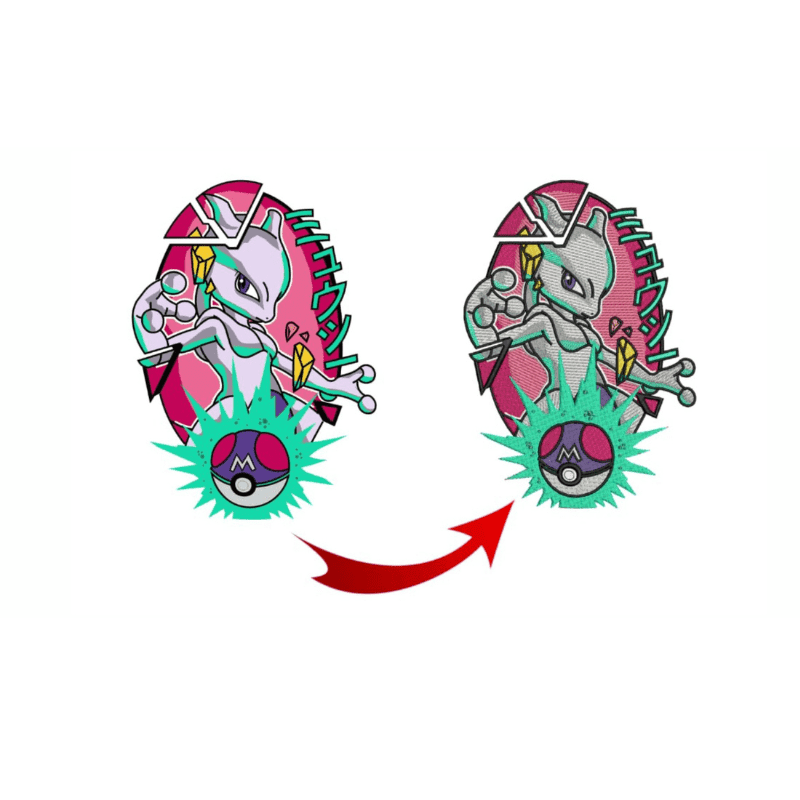Top-Rated Digitizing for Embroidery: Perfect Stitch Every Single Time
Top-Rated Digitizing for Embroidery: Perfect Stitch Every Single Time
Blog Article
Understanding the Needlework Digitizing Process: Your Ultimate Overview
Needlework digitizing is a precise craft that requires accuracy and proficiency to equate intricate layouts into digital layouts for equipment needlework. As artisans embark on this journey to understand the needlework digitizing process, a thorough understanding of the basics sets the structure for quality.

Recognizing Embroidery Digitizing Basics
Embroidery digitizing basics develop the foundation whereupon complex designs are equated right into machine-readable styles for exact sewing. This first action in the needlework digitizing process is essential for ensuring that the last embroidered item is a faithful depiction of the original layout. Comprehending embroidery digitizing fundamentals includes grasping crucial concepts such as stitch types, stitch direction, density, padding, and pull payment.
Stitch types play a crucial role in establishing the visual and textural result of the embroidered style. By picking the appropriate stitch type, whether it be satin, fill, or running stitch, digitizers can attain the desired impact and improve the general high quality of the embroidery. In addition, stitch instructions affects the circulation and measurement of the style, while thickness figures out the spacing and coverage of the stitches.
Moreover, underlay sewing provides security to the style by securing the textile and protecting against distortion throughout the needlework process. Pull settlement is one more important consideration to counteract the all-natural propensity of material to contract when stitched. Understanding these embroidery digitizing fundamentals is fundamental for developing professional-quality embroidered products.
Selecting the Right Digitizing Software Program
Selecting the ideal digitizing software is an essential decision that substantially influences the efficiency and high quality of the needlework digitizing procedure. Digitizing for Embroidery. When choosing the best digitizing software program, it is vital to take into consideration aspects such as the intricacy of designs you plan to create, the user-friendliness of the software, the level of consumer support offered, and the compatibility with your embroidery device
There are various digitizing software application choices offered in the marketplace, varying from standard programs for newbies to innovative software for professional digitizers. Some prominent selections include Wilcom EmbroideryStudio, Hatch Embroidery Software, and official source PulseID. These software use a vast array of devices and attributes to aid you produce detailed designs easily.
Prior to choosing, it is advisable to explore the various software program alternatives with complimentary trials or demos to determine which one ideal matches your requirements. In addition, checking out evaluations and seeking recommendations from experienced digitizers can give beneficial understandings into the strengths and weak points of each software (Digitizing for Embroidery). By thoroughly assessing your requirements and comparing the attributes of various digitizing software program, you can make an enlightened choice that enhances your embroidery digitizing workflow
Digitizing Tools and Strategies

Optimizing Layout Setup for Needlework
Mastering the complexities of layout setups is essential in attaining optimal results in the embroidery digitizing procedure, structure upon the foundation laid by comprehending digitizing tools and techniques. When enhancing layout settings for needlework, it is important to take into consideration elements such as stitch kind, density, rug, draw compensation, and enrollment. Enrollment settings line up various elements of the style properly, maintaining general layout integrity.

Troubleshooting Common Digitizing Issues
When running into typical digitizing sites issues throughout the needlework process, it is important to understand the source and carry out effective services without delay. One typical issue is stitch thickness problems, where stitches might be also dense, creating the fabric to pucker, or also sporadic, causing spaces in the design. Adjusting the stitch thickness setups in the digitizing software application can aid resolve this issue.
One more constant challenge is thread breaks during the needlework procedure. This can take place due to different factors such as inaccurate tension settings, boring needles, or making use of low-grade string. Guaranteeing appropriate maintenance of the needlework equipment, consisting of normal needle changes and tension adjustments, can reduce the incident of string breaks.
In addition, design registration errors can result in misaligned elements within the embroidery style. Inspecting the style positioning in the digitizing software application and making needed modifications prior to sewing can assist in avoiding this problem. By attending to these typical digitizing discover here concerns without delay and effectively, you can ensure a smoother embroidery procedure and top quality finished products.
Verdict
In conclusion, understanding the needlework digitizing procedure needs a strong understanding of the fundamentals, the best choice of software, and expertise of devices and techniques. Enhancing design settings and repairing usual digitizing problems are important steps in ensuring top quality needlework outcomes. By complying with these steps faithfully, one can attain precision and efficiency in the digitizing procedure.
Report this page